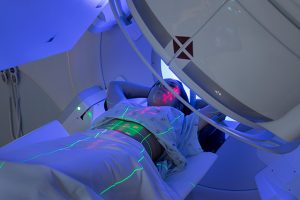Published data from the National Cancer Institute show that more than half of stage III breast cancer patients eventually succumb despite undergoing six months of adjuvant chemo-radiotherapy after a lumpectomy. Conventional chemotherapy is inadequate and fails to eradicate every cancer cell in the body.

Long-term remission
Conversely, Side Effect-Free Chemotherapy (SEF Chemo) has proven to be more thorough in eradicating all cancer cells. Where conventional chemotherapy fails, SEF Chemo has induced long-term remissions in patients whose cancer has spread. The longest such survivor is a stage IV breast cancer patient with liver metastasis who was treated with SEF Chemo in 2005. She is still in remission almost two decades later. To date, SEF Chemo has achieved strong responses in all types of cancer treated.
Conventional chemotherapy, particularly in stage IV breast cancer, show response in only 28% of cases, and when they do respond, the cancer can return to progression after only 3-6 months.
Side Effects
Many patients refuse conventional adjuvant chemo-radiotherapy due to the horrible side effects—nausea, vomiting, diarrhea, hair loss, and neuropathy—are common. An estimated 65% of patients undergoing conventional chemotherapy experience what doctors call alopecia—hair loss—and when it occurs, it can be emotionally devastating. Radiation can cause breast tissue to harden and become hypersensitive. Radiation may expose patients to other cancers as well as to autoimmune diseases later in their lives. Conventional adjuvant therapy can induce premature menopause.
SEF Chemotherapy achieves strong responses with breast cancer patients without the side effects normally associated with conventional chemotherapy—vomiting, diarrhea, hair loss, and neuropathy—nor does it induce menopause.
Quality of life
In conventional adjuvant therapy it is common for patients to undergo two months of chemotherapy followed by eight weeks of 5-day radiotherapy, and then another two months of chemotherapy. Many cannot continue to work. Quite often, patient’s bone marrow—white blood cell production—is so decimated that doctors have to use costly marrow stimulators to restore blood counts. These agents have potentially serious risks and side effects. Permanent damage may be done to the marrow that can affect patients in their senior years.
SEF Chemo patients often have the ability to continue working full-time while undergoing treatment. Patients with stage I-II breast cancer, usually undergo 8-10 cycles before completing therapy. Exceptions to this rule are uncommon. Live beyond a cancer diagnosis with SEF Chemo.
For more information, please check out our SEF Chemo: Therapy Explained and Resources & News. We’ll keep you up-to-date on informative articles, medical discoveries, as well as, comprehensive breaking news in the world of cancer.

